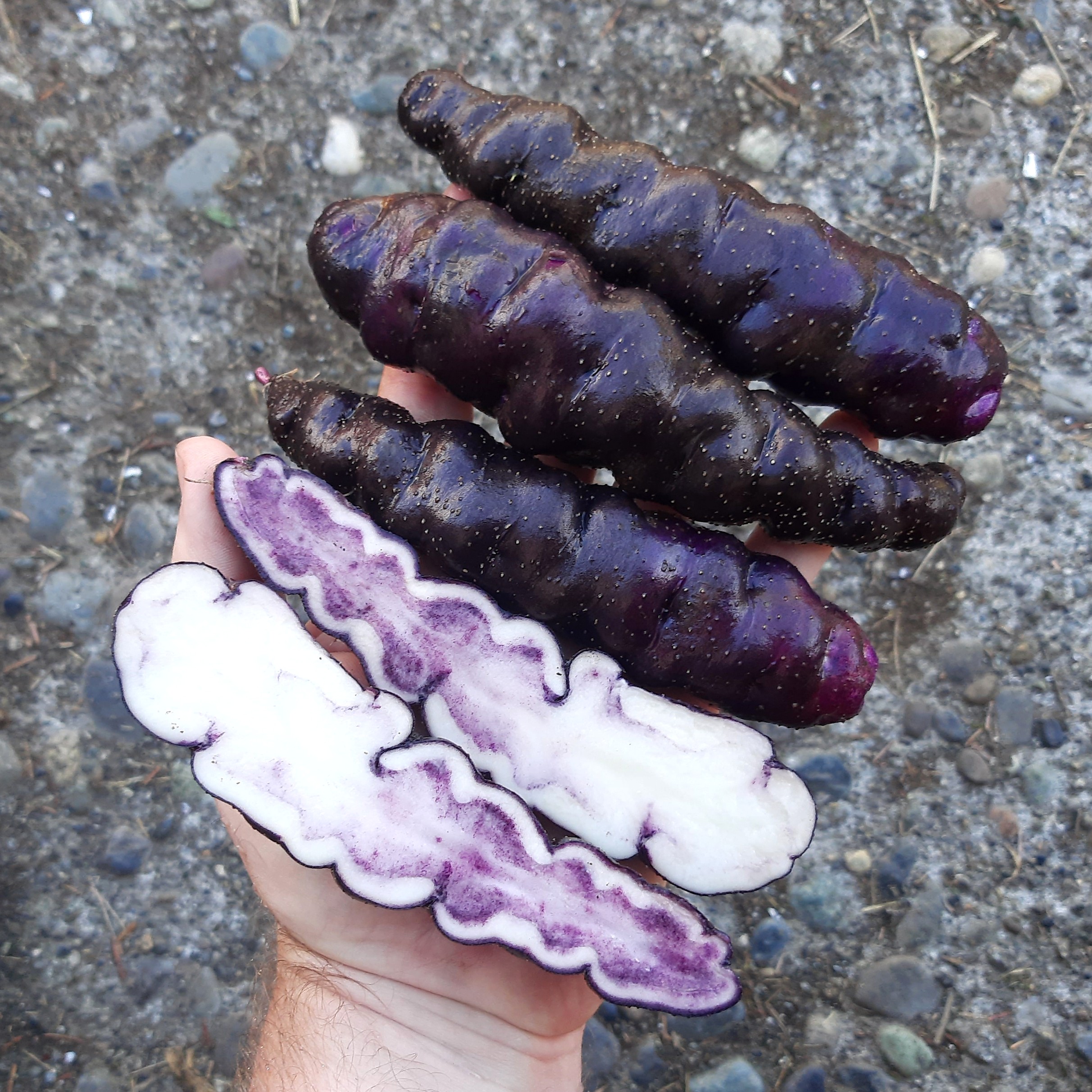No products in the cart.
| In Vitro Plantlets Information and Growing Instructions |
| This is an OSSI open source variety. Click for more information about open source seeds |
Deah is a Cultivariable original variety introduced in 2023. It is a long, blue tetraploid fingerling with white and blue flesh. This variety was selected from progeny of the Pacific Northwest heirloom variety ‘Ozette.’ Ozette is probably one the first potatoes introduced to North America. It was given to the Makah people of the Olympic Peninsula by visiting Spanish explorers in the late 1700s. Ozette has a lot of great qualities. It is delicious, has a unique appearance, and tolerates our Western Washington weather very well. Unfortunately, it has very poor sexual fertility, so it is really difficult to breed with. The flowers tend to drop even before they open and those that do hang on tend to fail even if hand pollinated. I have been working at breeding with Ozette for a few years now and previously introduced Rozette, progeny of Ozette with red tubers of a similar shape. Deah rounds things out with a blue tuber otherwise similar to its parent. This variety is named for one of the Makah villages.
Culinary Traits
Deah is an all-purpose variety, although it leans more toward the starchy side. I enjoy it sectioned and roasted, although I often prefer to cook potatoes this way. It retains it skin color when cooked and the flesh becomes more uniformly blue.
Agronomic Traits
Deah makes a pretty large and sprawling plant, growing about 30 inches tall. The stolons are longer than most commercial varieties, usually about a foot long. It is a late variety, harvestable any time after about 100 days in our climate. The tubers continue to grow larger the longer the plant grows. Left to grow until natural senescence, most tubers will grow about 8-9 inches long, but I have seen a few longer so they might go bigger in rich soil. Yields average a bit less than 2 pounds per plant. Tubers have strong dormancy and store well for at least five months. If you need to store them longer, keep them in a perforated plastic bag in the refrigerator.
From a breeding perspective, Deah is exciting because it appears to self pollinate. I have not yet done a careful test, so I could be wrong, but there is a lot of evidence. Unlike most Ozette progeny, it has well developed anthers and sheds pollen. It forms berries easily without hand pollination and those berries have high seed counts. The pollen was stainable, which is usually an indicator of fertility. Given the apparent male sterility of the other Ozette seedlings I have grown, I think the most likely explanation is that this variety received a pollen fertility restoration gene. These restorer genes are known to exist, but are uncommon.
Tubers are somewhat vulnerable to jelly end, a physiological condition that occurs under conditions of uneven soil moisture and that is common in fingerlings.
Fertility: MF2, FF7
Only logged in customers who have purchased this product may leave a review.


Reviews
There are no reviews yet.